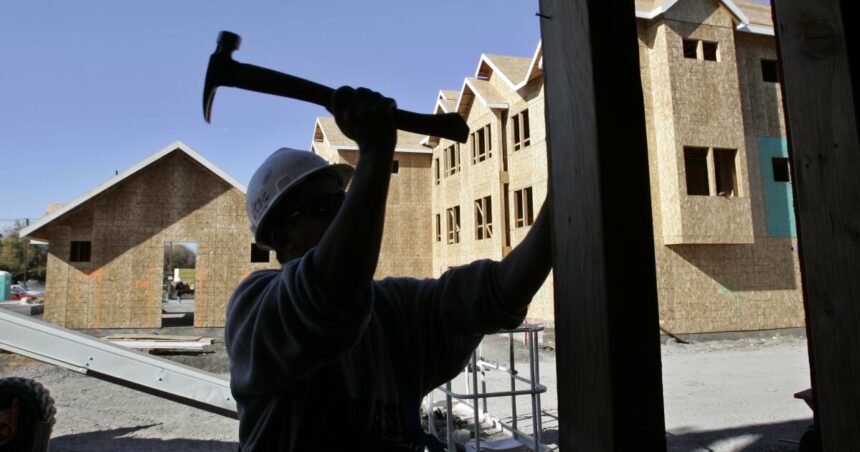Latinos in California face significant disparities in income, homeownership and education compared to their counterparts in other states with large Latino populations such as Texas and Florida.
Our nation’s housing crisis is a big part of the explanation, and one of the causes of the crisis is the deviation from a well-designed 1970 law, the California Environmental Quality Act, known as CEQA. It has evolved into the most powerful legal tactic to prevent housing development, contributing to high costs and limited affordability. Even if the proposed development can overcome legal obstacles, the houses finally approved are unaffordable for working families because the complex web of mandates and environmental costs add hundreds of thousands of dollars to the cost of each new house or apartment.
This is an obstacle to upward mobility for all Californians, especially young people – which in this country means especially Latinos, who are 40% of the population and make up more than half of the residents under 18. CEQA needs reform to put America. the dream is back in reach for young Californians.
The value of homeownership is important, providing both housing and long-term stability to be part of the neighborhood and community schools, not to mention generational wealth and nest eggs. However, California is a difficult place to pursue that dream. In 2022, only 46% of Latino households will own a home, compared to 51% nationwide. The rate is 59% in Texas, 55% in Florida and more than 70% in New Mexico.
with California median home prices soaring over $900,000 in AprilCalifornia’s housing policy choices have made home ownership a distant dream for most younger citizens and for most hard-working Latino families, many of whom did not inherit the wealth of their parents’ home equity and who are not on the path to passing on their valued home equity. to his children.
CEQA, intended as a progressive environmental policy, is now clearly undermining the economic potential of California’s Latino population. This process began in the 1970s, when a predominantly white upper-class environmental movement emerged as a dominant political force. CEQA was enacted to minimize environmental harm from these infrastructure public works projects, but a 1972 court ruling expanded it to cover residential buildings. After thousands of subsequent CEQA lawsuits, it now even applies to home renovations.
This law has strayed far from its purpose and needs to be brought under control. Virtually anyone – even those who have no direct interest in the project or the environment – can claim to block the house for any reason. Cases can be filed anonymously. Sometimes one real estate company even sued to block another project for competitive reasons.
The state government’s Little Hoover Commission urged the Legislature to release them all stuffing housing from CEQA, which would allow more housing to be built on unused land in already overpopulated areas. The Commission also called for an end to anonymous CEQA lawsuits, a ban on lawsuits filed for non-environmental reasons, and clarification and expediency of the CEQA process.
Although the California Legislature has passed nearly 200 laws since 2017 intended to boost housing supply and reduce bureaucratic costs and delays, lawmakers have not reined in abuses of CEQA. They also never authorized most of CEQA’s judicial mission. In its current interpretation, the law is biased against changes in private views, against temporary construction disturbances during the day and against common urban species such as seagulls and robins. Housing policies designed to address these CEQA barriers, such as prioritizing infill high density housing near transit, economically infeasible in almost all of California when more affordable housing, in areas where Latino homeownership is increasing, continues to be stymied by anti-development advocates.
The inverted mindset of today’s environmental policy is ultimately anti-people and anti environment. The California Air Resources Board, whose policy is enforced through CEQA, counts jobs and people moving out of cities or counties as “reductions in greenhouse gas emissions” — even if those jobs and people move to states and even states with a more relaxed environment. standard. California’s lost jobs and population will be the most likely Raise it global greenhouse gas emissions. So much for California’s climate change “leadership.”
The agencies and advocates pushing this “de-growth” agenda through CEQA share the “no growth” dogma of the environmentalists of the 1970s, which then and now means “no growth for ‘them.'” The intent is racism, and the effects of racism. The housing crisis hits Black and Latino Californians the hardest, as even CARB with The nonpartisan Office of the Legislative Analyst now firmly admit.
California cannot solve its housing and homelessness crisis without building millions of new homes that are truly affordable for California’s working families — and doing so faster, without counterproductive legal hurdles that increase delay and cost.
CEQA reform is key to this. A good start would be an immediate moratorium on CEQA lawsuits based on any theory that the statute or regulation does not permit. The governor should just direct the agency, and urge the courts, to follow the law and dismiss the lawsuit.
Today’s more diverse Legislature should be able to do more, serve all Californians better than the sea of white male leaders and judges long held captive by NIMBY environmentalists.
It’s time we recognize the failure of CEQA’s expansion and begin making the policy changes needed to restore the American dream of home ownership for younger and more diverse Californians.
Soledad Ursúa is an elected board member of the Venice Neighborhood Council. Jennifer Hernandez is a partner at the law firm Holland & Knight. Ursúa is the lead author, and Hernandez is a contributor, the new report “El Futuro es Latino.”




